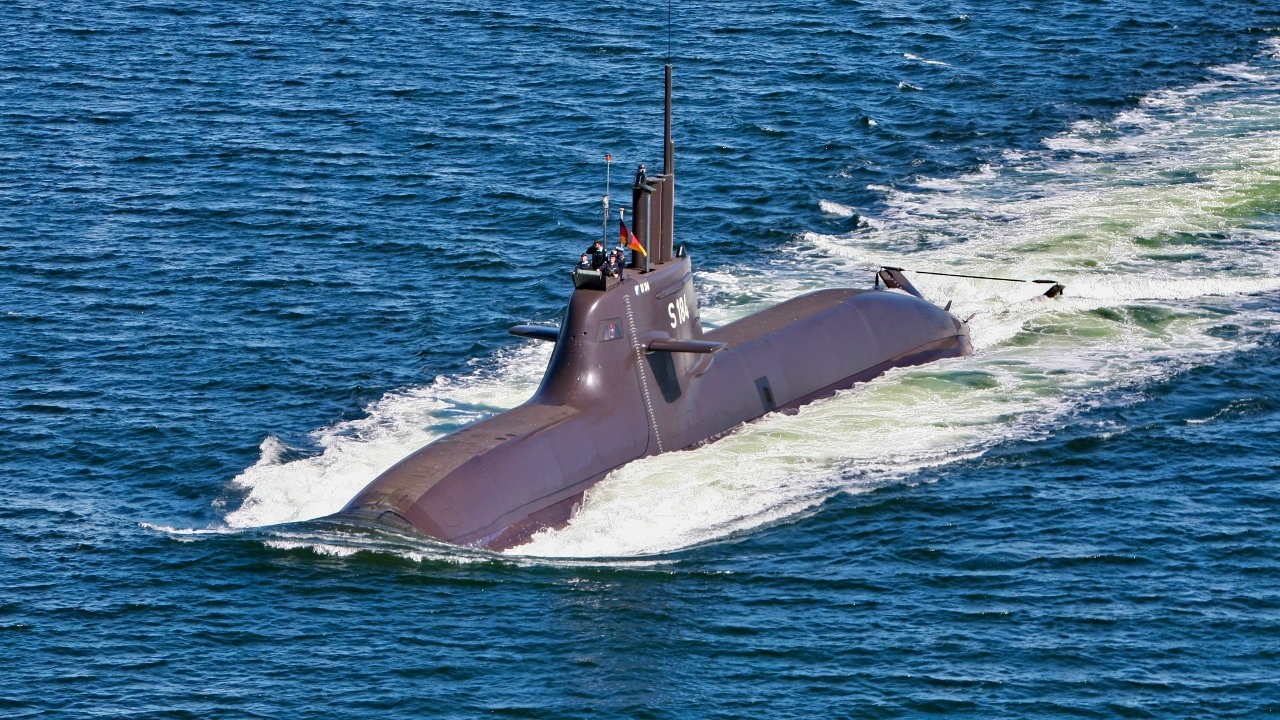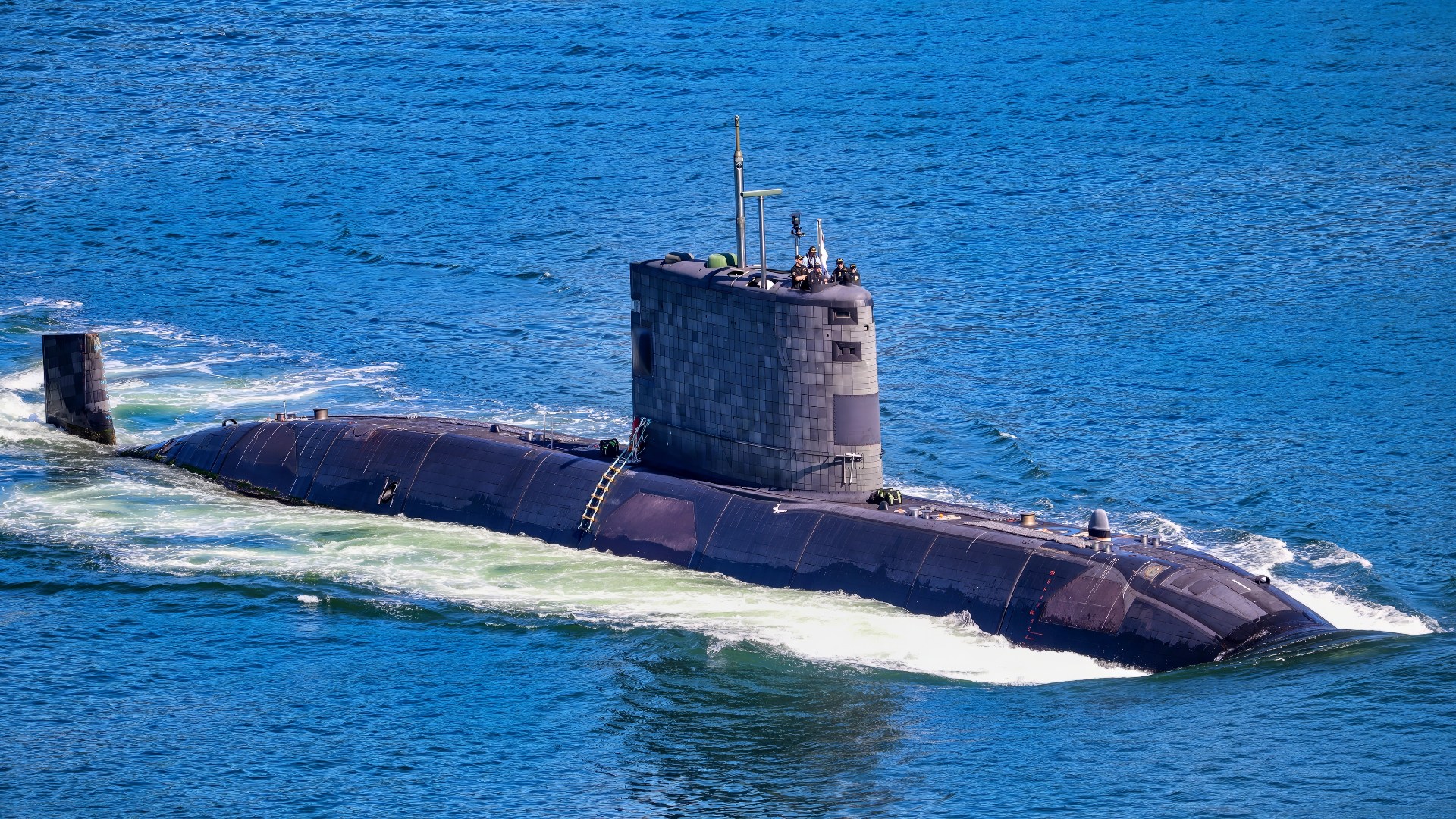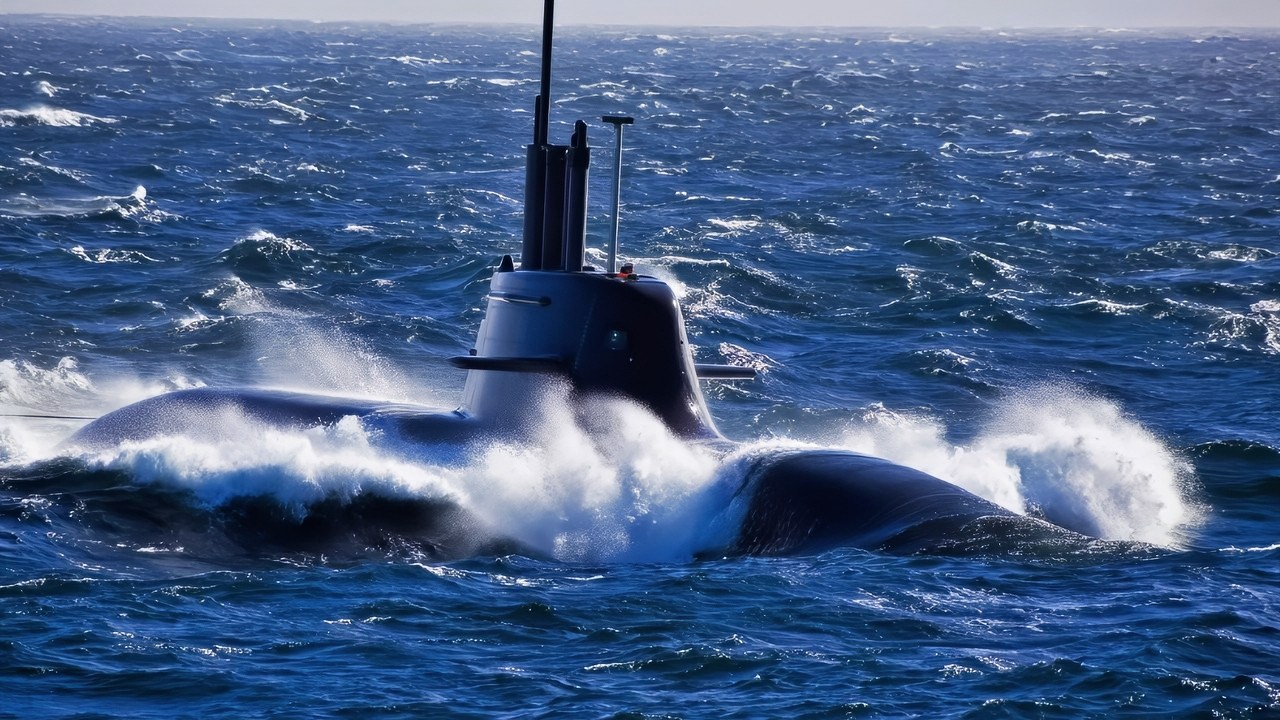Key Points and Summary – Germany’s Type 212 pioneered near-silent hydrogen fuel-cell air-independent propulsion, letting a non-nuclear sub remain submerged for weeks while evading acoustic, magnetic, and sonar detection.
-Its raft-mounted machinery, non-magnetic steel, and clever torpedo-room layout boost stealth and crew efficiency; war games show it can “disappear.”

Type 212A. Image Credit: Creative Commons.
-The larger Type 212CD adds range, volume, and a diamond-profile hull to deflect sonar, pairing improved batteries with AIP for longer endurance and blue-water reach.
-Germany and Norway are buying it—and TKMS is pitching 12 boats to Canada against South Korea’s AIP KSS-III. Quiet, efficient, and expeditionary, the 212/212CD sets the benchmark for non-nuclear subs.
Germany’s Type 212 Submarine Explained
The Type 212 submarine, initially built by Germany’s Howaldtswerke-Deutsche Werft and today by ThyssenKrupp Marine Systems, is one of the world’s most advanced non-nuclear submarines in service.
Primarily operated by Germany and Italy, the submarine is designed to operate efficiently and stealthily in both blue-water open-ocean environments and shallower littoral waters.
The Type 212’s uniqueness lies in its particular design.
Though non-nuclear powered, the submarine can spend extended periods underwater thanks to an air-independent propulsion system that uses hydrogen fuel cells.
Consequently, the submarine can spend more than two weeks submerged—significantly longer than traditional diesel-electric submarines that must periodically snorkel to recharge onboard batteries.
The Type 212’s AIP system is believed to be virtually silent, giving the submarine a distinct underwater edge.
Air-Independent Propulsion
The Type 212’s AIP system, built by Siemens, uses its fuel cells to generate electricity via chemical reaction between stored oxygen and hydrogen, akin to how quietly a nuclear-powered submarine can operate, though without the heat and expense of a nuclear reactor.
The submarine’s hull is built from non-magnetic steel, which helps evade detection by magnetic anomaly detectors and magnetic sea mines—a particularly valuable feature for operations in shallower waters, such as those in the Baltic Sea or elsewhere.
But the Type 212’s hull is also uniquely sized, with an unconventional internal layout.
“Although the submarine is relatively short, it has a larger diameter hull than the larger displacement Type-214. This allows for an extra level—effectively three decks. This permits a significant difference in the torpedo room relative to most other postwar German-built submarines,” H I Sutton, a naval expert, explained.
Sutton notes that the submarine’s torpedo tubes “are offset to the port (left) side. This also allows the torpedo stowage to be offset, which in turn means the mess area can be a permanent structure on the starboard side. Some mess tables in the central corridor still need to be folded to allow reloading of the central two tubes, but the crew does not have to live in the torpedo room in the same way as narrower boats. This must increase operational efficiency and help crew comfort. The torpedoes are loaded into special containers for safer handling within the magazine.”
A richly detailed breakdown cutaway of the submarine is available here.
The Type 212 is noted for its extremely low acoustic signature, in part due to its raft-mounted propulsion system—essentially a rubberized layer of insulation between components that generate vibration, such as the engine, crew quarters, or other potentially high-vibration areas.
The submarine has been noted for its ability to “disappear” during war games, confounding even the United States and Royal Navies’ efforts to detect it.
The Type 212CD, or Common Design, submarine, is significantly larger than its predecessor, with a surfaced displacement of around 2,500 tons, up from the previous 1,500-ton design.
The submarine’s width and length are both increased, offering it more internal volume for additional weaponry, food, and fuel stores, and extending its endurance. The Type 212CD’s hull is diamond-shaped, an optimization that reduces sonar detectability by deflecting sonar waves away from adversary receivers.
Though much about the submarine is shrouded in secrecy, the sub’s AIP fuel system builds on the base model, with improved batteries that offer high energy capacity and, therefore, greater endurance.
The submarine’s larger size provides Germany and Norway—currently the only two Type 212CD operators—with greater flexibility for expeditionary patrols much farther afield than previously possible with the submarine’s smaller predecessor.
Moves in Canada
Germany’s TKMS, a German shipbuilder and builder of the Type 212 submarines, is competing for a Canadian naval contract to build 12 new submarines, with some estimates putting the contract at $100 billion for the new fleet.

Victoria-Class Submarine of Canada

The Royal Canadian Navy long-range patrol submarine HMCS Victoria (SSK 876) arrives at Naval Base Kitsap-Bangor for a port call and routine maintenance. The visit is Victoria’s first to Bangor since 2004. (U.S. Navy photo by Lt. Ed Early/Released)
TKMS’s bid for the contract is the Type 212CD. Hanwha, a South Korean manufacturer, is offering its KSS-III submarine, which, like the German submarine, is equipped with an Air-Independent Propulsion system.
The South Korean firm has reportedly tried to sweeten the deal by offering “extensive offset services,” though Canada has yet to make a decision. Germany, too, would like to ensure its bid’s success by procuring a Canadian combat management system and aircraft from Bombardier, a Canadian aerospace firm.
What Happens Next?
The Type 212 submarine stands out as an early pioneer of hydrogen fuel-cell propulsion, bridging the gap between the massive nuclear-powered submarines of the United States and Russian Navies and the comparatively diminutive diesel-electric submarines of other navies.
In short, the submarine’s strengths lie in its advanced noise-reduction measures and careful attention to hull shape and properties.
These, in combination, make the Type 212 one of the quietest and most highly advanced non-nuclear powered submarines in the world. And with the Type 212CD just on the horizon, those strengths are set to be magnified.
About the Author: Caleb Larson
Caleb Larson is an American multiformat journalist based in Berlin, Germany. His work covers the intersection of conflict and society, focusing on American foreign policy and European security. He has reported from Germany, Russia, and the United States. Most recently, he covered the war in Ukraine, reporting extensively on the war’s shifting battle lines from Donbas and writing on the war’s civilian and humanitarian toll. Previously, he worked as a Defense Reporter for POLITICO Europe. You can follow his latest work on X.
More Military
Forget the F-35 of F-47: A 7th Generation Fighter Is Possible
$500 Drones are Destroying $10,000,000 NATO Tanks in Ukraine War
The Mach 2.2 F-4 Phantom II Fighter Has a Message for Every Air Force on Earth
China’s White Emperor ‘NGAD’ Stealth Fighter Summed Up in 2 Words










